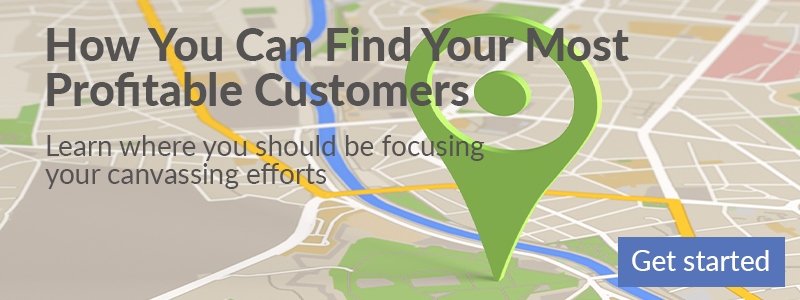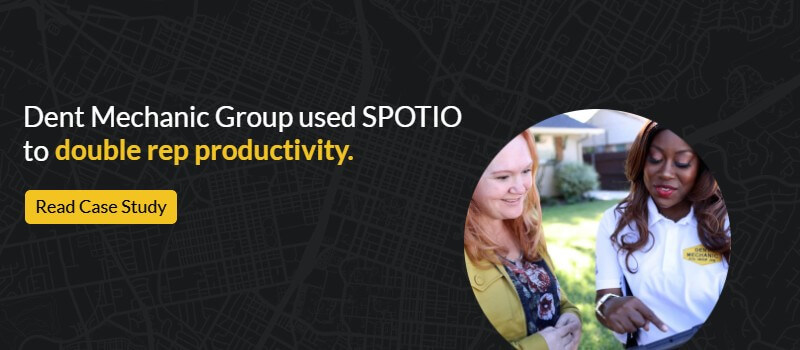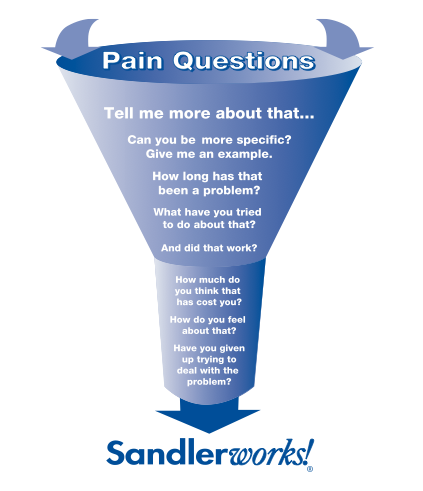In both inside and outside sales environments, a lot of emphasis is placed on nurturing leads and closing deals.
And while those steps are crucial when it comes to locking down new clients, improving your team’s activity-to-appointment ratio should also be a priority.
The first step toward closing a deal is getting a prospect to commit to that first appointment, after all.
Sales appointment setting is a vital part of any sales strategy. It’s a direct line between lead generation and the rest of the sales process. Below, we’ve outlined effective appointment setting techniques to help sales teams land more meetings.
Below, we’ve outlined effective appointment setting techniques to help sales teams land more meetings.
Canvassers and Reps
Before we dig into specific appointment setting tips, let’s back up and discuss the difference between canvassers, appointment setters, and traditional sales reps.
In an inside sales setting, an appointment setter is a sales rep that focuses on bringing qualified leads into the pipeline by cold calling prospects and setting up appointments for a different rep.
In a field sales environment, a canvasser is responsible for setting appointments on behalf of sales reps. Instead of cold-calling prospects like their office-bound counterparts, canvassers visit businesses door-to-door.
Canvassers typically set appointments for reps from the field, making sure that all necessary information has been recorded in the CRM so the sales rep has all of the information they need to close the deal.
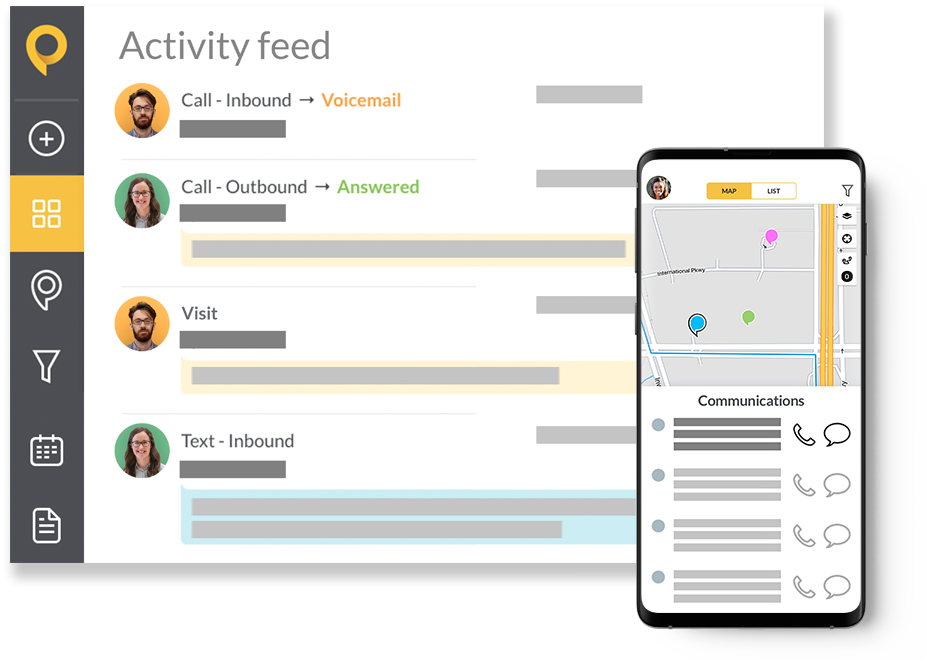
Ultimately, the canvasser aims to set the sales rep up for success.
In this context, “sales reps” typically refer to sellers that work the deal after the initial appointment has been set up. Ideally, these reps will only spend their time on qualified, high-intent prospects.
Of course, some reps — inside and outside alike — handle the entire sales cycle from prospecting to appointment setting to close.
While every sales team is structured differently, the following tips will help canvassers and reps set more appointments with qualified prospects—all without leaving the field.
10 Sales Appointment Setting Tips
Many people don’t realize how hard it is to bring in the right leads. Every stage in the sales funnel has its own set of challenges, but the appointment setting process is the first major barrier to closing deals.
To avoid wasting time and resources on cold calls that go nowhere, sales leaders must build a strategic appointment setting framework that positions their sales team for success.
#1. Set a clear goal
As with any sales strategy, appointment setting success begins with a clear focus on the right goal.
In this particular context, the goal is getting the prospect to commit to continuing the conversation.
And while it might sound simple, it’s important to understand that sales appointment setting always centers around two goals: there’s the ultimate goal of closing a deal but also the short-term goal of getting the first serious “yes” from the prospect. This is the stage where a lead becomes an opportunity.
As a sales leader, you want to make sure that your appointment setters focus on the immediate goal–booking an appointment–instead of trying to lock down a closed sale during that initial interaction.
Additionally, canvassers should keep the end-game top-of-mind, making an effort to record as many details as they can to make life easier on the rep that will eventually take over the deal.
The bottom line here is, your strategy should focus on the activities that drive the smaller wins, while also aligning around the big-picture plan.
#2. Know your leads inside and out
Before your reps start visiting prospects, clarify who they talk to and how your product/service can help them solve their problem.
After all, showing up without real reason for being there is both intrusive and awkward. With that in mind, you’ll want to spend some time identifying your ideal customer profile (ICP). This will help improve your prospecting efforts, position your solution, agitate pain points, and eventually, close the deal.
At a minimum, you’ll want to do thorough research to make sure that you can answer the following questions:
- Who are you trying to reach?
- Does this person have a genuine need for what you offer?
- Why should the prospect care about this problem right now?
- Can you explain the value of your solution in a way that aligns with the prospect’s individual needs or pain points?
- Are the prospect’s circumstances changing? For example, is the company expanding, have there been any recent personnel changes, or are industry regulations changing?
If you can get prospects to see what’s in it for them, it will be easier to schedule an appointment.
#3. Align insights to your prospecting efforts
Once you know who your ideal customer is, you can align those insights with your prospecting tools to make sure that your appointment setters focus their outreach efforts on the right leads.
For example, SPOTIO’s Lead Machine feature gives reps the data they need to quickly identify the right leads and disqualify poor-fit prospects. Appointment setters can even filter leads based on 200+ data points, like revenue, business type, and location.
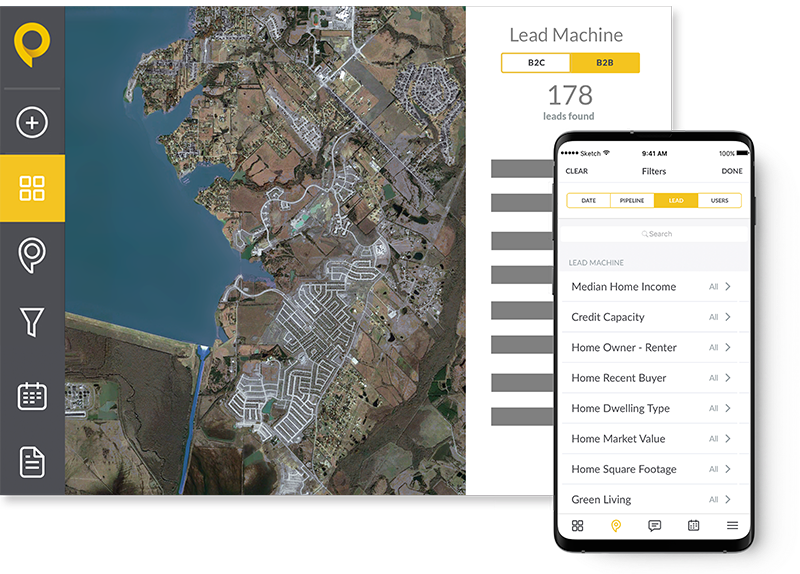
Image: Filtering prospects in SPOTIO based on 200+ attributes.
#4. Confirm the prospect is available
When visiting offices in the field, ask if the prospect has time to talk before diving into your script.
You’re showing up unannounced, which means you might be walking in at an inconvenient time. The prospect might be helping a customer, on a call, in another meeting, etc.
By taking the time to confirm availability, you’re showing potential buyers that you respect their time. It’s a simple step that could buy you time to make the case for your solution and book an appointment.
Even when prospecting over the phone, be courteous and ask your prospect if now is “a good time to chat.”
#5. Deliver an elevator pitch
After you’ve confirmed the prospect “has a minute” to hear what you’ve got to say, you’ll want to deliver your elevator pitch.
According to a Sales Scripter video, you can take one of three main approaches here.
- Value statement. A few sentences that explains how your product/service helps people like the person you’re talking to.
- Common examples of problems your solution solves. Think something along the lines of, “we help B2B marketing teams with A, B, and C problems.”
- Share a client example. A quick summary of how you’ve helped X company solve Y problem, and get Z results–you don’t need to launch into the full story this early in the call.
Whatever approach you end up settling on, the key thing to remember here is that an elevator pitch is always about the benefit, not the product.
#6. Share problems to agitate a problem
Next, mention the problems that you know the prospect experiences based on the insights gathered back in step #2.
Your goal is to get the buyer to acknowledge their problem. Oftentimes this will create just enough interest to book an appointment with the prospect.
Again, because this is the first point of contact, don’t get too deep into the benefits and product specs.
Just plant the seed for future interactions. Basically, give prospects a teaser to help them see the benefits they’ll experience if they take the next step.
#7. Pre-close with the value proposition
At this point, the prospect should be actively thinking about their problem. So you’ll want to shift gears and share some brief details about the product/service you sell.
Your best bet is to take on a consultative, helpful tone. Don’t try to pressure the prospect into buying anything.
Instead, use the insights you gathered to connect your offer to the reality of this person’s day-to-day life.
How can you help them gain a competitive advantage, get more done, look good in front of their colleagues, etc.?
You might try asking the prospect what it would cost them to not do anything about the problem. From there, you might share a story about a client with a similar problem and how your solution helped them turn things around. Ideally, you’ll point to specific numbers for greater impact.
Avoid giving away too much information. Just set the stage for when you ask for an appointment.
#8. Ask for the appointment
It might seem obvious, but a lot of people forget to ask for the appointment.
Again, the goal is to get an actual appointment on the books. Make sure you’re specific when you make the ask. Also, keep these four things in mind:
- Instead of saying, “let’s set up a meeting to discuss next steps,” offer a specific time– “I have time next Tuesday at 11:30 am. Does that work for you?” By asking prospects to commit to a time, the conversation changes from “let’s get together some time” to “when can you meet?”
- Who will be present for the meeting? Will it be the same rep? A different salesperson? Both? What about on the prospect side? Should multiple decision-makers be present?Clarify these details.
- What will be discussed during the meeting? Be sure to lay out a brief agenda that centers on a specific goal, e.g. a discovery call, a demo, a requirements-gathering mission, etc.
- Where will your meeting take place? Options include Zoom, Google Hangouts, the prospect’s office, etc.
Ideally, you should aim to schedule the meeting during that initial interaction.
Then you can follow-up by sending an appointment reminder with details (not re-confirming). If they don’t “go for it,” you can also follow up by sending them a link to your calendar to book an appointment. Though you’ll want to make sure you try to book first before using this option.
Again, it’s important to remember that you’re not closing the sale, just generating enough interest to close the appointment.
#9. Set appointments from the field
If your team is setting appointments from the field, you’ll want to make sure canvassers have access to the sales calendar. That way they can check rep availability immediately and confirm details with the prospect in-person.
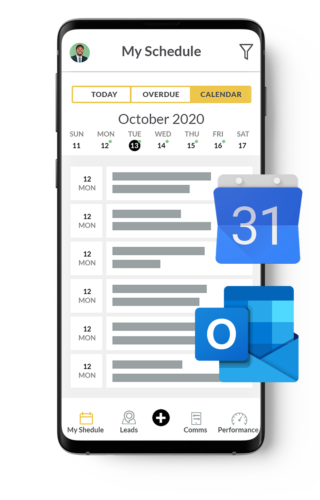
Image: Using SPOTIO to set appointments for reps while in the field.
SPOTIO integrates directly with Google Calendar and Outlook, making it easy for reps to manage their time by setting availability. This removes friction for canvassers booking appointments from the field.
Our platform also allows canvassers to record visits, sync notes and send those details straight to the CRM for reps to review later. The result? A smooth handoff between the appointment setter and sales rep that sets the stage for an easy win.
#10. Prepare for objections
Once you qualify the prospect and start working toward the close, you’ll probably encounter a few objections. We are talking about cold calling, after all.
At a minimum you can expect to hear “not interested,” “don’t have time,” or “send me an email.”
Get ahead of the inevitable and give your team a counter to every objective they might hear during that initial call.
We’ve covered objection handling in more detail before, here are a few key things to keep in mind as you build out your strategy.
- Ask thoughtful, open-ended questions. When the prospect says something like “It’s too expensive, I don’t know if we have the budget right now,” you might respond with something like this: “I totally understand that price is a concern.
Is there anything else about moving forward that raises any red flags?” At that point, stop talking and listen to what the prospect has to say.
Again, this isn’t supposed to feel like a hard sell. Ultimately, reps should think about these early conversations as an opportunity to unlock insights that can enhance the sales process later on.
- Turn the objection into value.Frame the objection around the problem the prospect wants to solve. This will give you an opportunity to rehash how your product/service addresses their unique set of needs.
Share client stories that include specific numbers that make your offer more tangible. What kind of ROI or cost-savings have you helped similar clients achieve? Make these details known.
- Highlight the competitive advantage. Try to think of objections as a chance to showcase the competitive edge that your solution brings to the table. Train your reps to counter resistance with case studies, data-driven insights, and numbers that back your best claims.
Sales Appointment Setting Script
Finally, you’ll want to come up with a script so that your reps know exactly how to move in the right direction.
Keep in mind, the script isn’t meant to be read verbatim. Instead, it acts as a framework reps can use to structure their conversations, while also leaving room for reps to switch things up based on their own selling style and the prospect’s responses.
Below, we’ve outlined a basic script that you can customize for your business using the tips we mentioned above. Note that this script can work in person ors over the phone.
- Introduction. “Hi Jim, this is Susie from Sample Corporation, do you have a few minutes to chat?”
- Elevator pitch. “Perfect, the reason I stopped by is, we help sales managers at companies like yours improve their territory mapping and rep assignments with X, Y, and Z.”
- Pain points. “I’m curious, how are you currently handling [pain point]?”
- Value statement. ”A great next step would be to set up a quick 20-minute meeting to discuss how we can help your organization solve [pain point] and achieve [key benefit].”
- Close. “It looks like I have some availability this Tuesday or Thursday between noon and 3:00 pm, how does that sound to you?”
If the prospect agrees to meet again, you can instantly set an appointment directly from the field or send them a link to your calendar to confirm the meeting.
Start Setting More Appointments
Getting the initial appointment on the books is the first step toward closing a deal.
However, it’s important that sales leaders align the appointment setting strategy with the rest of the sales process–from lead generation to prospect engagement,
SPOTIO is the #1 sales engagement solution for field reps and sales managers alike. With built-in prospecting tools, sales activity management, territory mapping, and GPS rep tracking, SPOTIO offers everything you need to turn your appointment setters into a full-fledged lead gen machine.
To learn more about how SPOTIO can help you transform your appointment selling techniques, sign up for a free demo.



